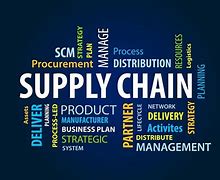The European Commission has released discovery from a pilot study that focused on understanding the difficulties in ensuring secure drug supply chains. The major challenge highlighted was obtaining information on critical medical products.
During COVID-19, members of EU states came across multiple occasions of critical drug shortages, pushing investigations by the commission and other stakeholders into the underlying causes and potential solutions. In December, a list of 200 essential medicines at risk of shortage was published by the European Medicines Agency ( EMA) along with Heads of Medicines Agencies (HMA).
A pilot study was initiated by the Commission focusing on 11 drugs to identify factors contributing to their potential shortages. The initial technical report was released on 10th July, detailing challenges that may lead to these shortages. The commission hopes to discuss this data on a forum such as the Medical Shortage Steering Group ( MSSG) or the Joint Industrial Cooperation Forum of Health Emergency Preparedness and Response Authority (HERA).
The commission ensures continuous availability of medicine is crucial in the European Health Union. It underlines the need to strengthen the resilience of the supply chain by access to essential capabilities from sourcing raw materials and Active pharmaceutical ingredients (APIs) to finished manufacturing.
Even though data collection is limited, the study revealed that Marketing Authorization Holders ( MAHs) only rely on a limited number of suppliers. Data highlighted economic challenges, including cost pressures, high competition and instability of the market. In the report, it was noted that companies plan their manufacturing capacity over short-term ( 3-6 terms), mid-year and long-term timeframes.
The report concludes that manufacturing and logistic issues are the primary causes of supply chain disruption. It is identified that manufacturing complexities and economic risk associated with investing in new or modified production lines contribute to these challenges
The study also highlighted various measures employed by member states to address supply chain issues and export restriction.







